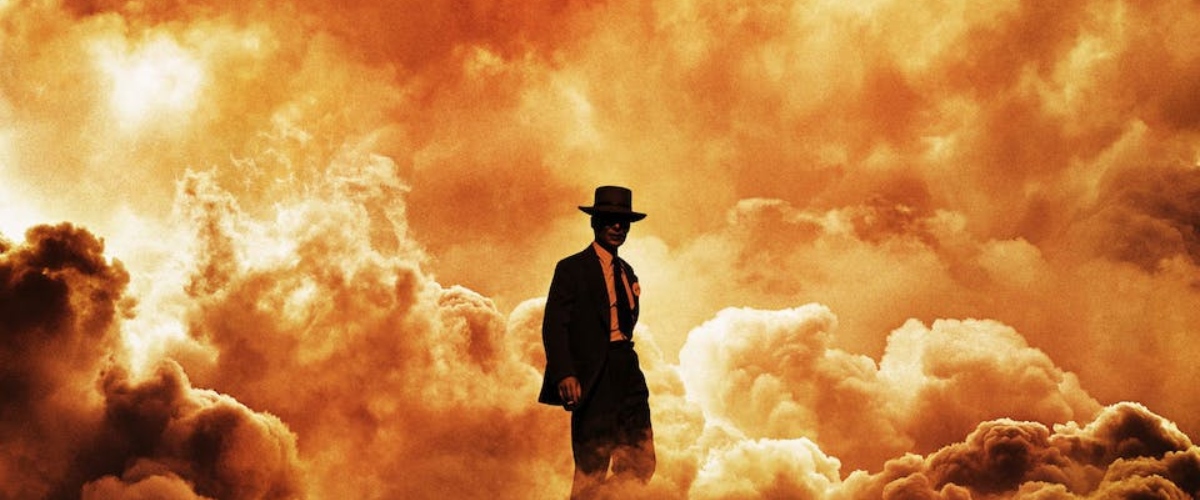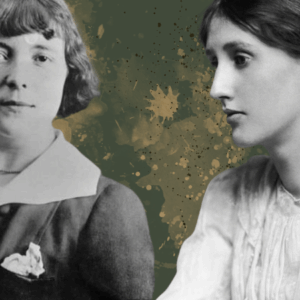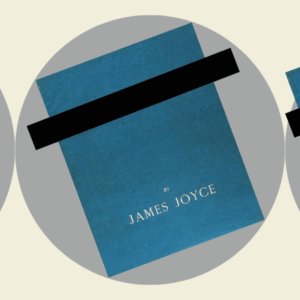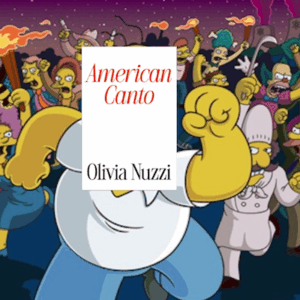
The Race to Make Hollywood’s First Atomic Bomb Movie
Before Christopher Nolan’s Oppenheimer, the World Nearly Got Ayn Rand’s ”Tribute to Free Enterprise”
It was early January, 1946, less than five months after the first atomic bomb exploded over Hiroshima, when novelist Ayn Rand found herself in Los Angeles sitting across from J. Robert Oppenheimer. For six months each year, Rand wrote screenplays for producer Hal B. Wallis at the Paramount studio. One film she had scripted, Love Letters, had earned four Academy Award nominations in 1945. She was riding high for another reason, however: her breakthrough 1943 novel, The Fountainhead, had returned to the bestsellers’ list as a paperback, propelled by news that Warner Brothers planned to turn it into a big-budget movie.
Oppenheimer, the so-called “Father of the Atomic Bomb,” was no longer at the Los Alamos complex where the revolutionary new weapon had been designed with a team of scientists under his direction. He was extremely busy, however, in his new role as top-level advisor on all matters nuclear in Washington, D.C. and elsewhere. His left-liberal political views hardly meshed with Rand’s aggressive pro-capitalist form of libertarianism, which she had dubbed Objectivism. Still, he had agreed to this interview.
Rand had insisted on this meeting in a manifesto she sent to Wallis before accepting her latest assignment for Paramount: writing the script for a major movie titled Top Secret. It was to dramatize the invention of the atomic bomb and its use against Japan. Obviously, a character based on Oppenheimer had to play a key part. But Paramount was not alone in pursuing this subject, and this famous physicist. MGM also aimed to be first with an Atomic Bomb movie. Its film was The Beginning or the End, and the studio’s chief, Louis B. Mayer, had already predicted it would be the most important movie he’d ever make.
The first “nuclear race” of the postwar era was on. Variety headlined the contest: “Hollywood Atom Sweepstakes.”
Rand took the meeting with Oppenheimer very seriously (his view of it is unknown). She had written in her journal a list of questions she planned to ask. They ranged from the strictly factual, such as when he arrived at Los Alamos, to the philosophical, often revolving around the notion of “free inquiry.” Who was really in charge there? Were the scientists “controlled”? Who interfered with them?
Oppenheimer patiently responded, describing key moments at Los Alamos. In her notes, she recorded him saying that the scientists hated to work for the US Army. There were allegedly no “rules” detailing secrecy measures—everyone just acted sensibly by making that a “principle.” The Jewish “refugee scientists” were mainly responsible for creating the bomb.
Rand found Oppenheimer to be a fascinating, if somewhat tortured figure.
Rand found Oppenheimer to be a fascinating, if somewhat tortured figure, conflicted about helping to create a world-shattering device that had killed nearly 200,000 Japanese civilians. The interview ended, however, before Rand got to the most important questions, from her perspective. So the ultra-busy Oppenheimer surprisingly agreed to a second session, one week later. Rand would even be allowed to interview his wife.
*
In the weeks following the explosion of the first atomic bombs over Hiroshima and Nagasaki in early August 1945, profound questions were raised in Washington, in scientific communities, and in the media about a highly dangerous future in the new Nuclear Era. Was the use of the first bombs over heavily populated cities justified? Should the US build more powerful weapons, risking a nuclear arms race with the Soviets, or seek international controls? Would years of nuclear testing, and the most extreme secrecy measures in our history, be worth it? Was there any defense against a nuclear attack?
The stakes were indeed high. How the American public and policymakers answered those questions, or failed to, might establish a risky, costly, and unnerving path for future generations.
When Rand was assigned to Top Secret by Wallis (best known for producing Casablanca and The Maltese Falcon), she outlined her concept for the film at her home in the San Fernando Valley. She called it “a tribute to free enterprise.” The most significant aspect of the film was to shatter the image of a government-directed Manhattan Project, overseen by socialistic President Franklin D. Roosevelt.
Instead, she would place individual volunteers and high achievers (such as Oppenheimer) at the center, along with industries (such as DuPont) that played a critical role. “If we take the greatest invention of man and do not draw from it the lesson it contains—that only free men could have achieved it—we deserve to have an atomic bomb dropped on our heads,” she advised. And “if anyone objects to our saying that, he does not deserve the name of a human being.”
Less than a week later, she would be grilling Oppenheimer.
*
Now teaching at Cal Tech in Pasadena, Oppenheimer was already raising concerns, publicly and privately, about building more powerful weapons that would spark a nuclear arms race with the Soviets. In an October 1945 meeting at the White House with President Harry S. Truman, who had ordered the bombs to be dropped over Japan, Oppenheimer expressed regrets, claiming he had “blood on [his] hands.” Truman, talking to an associate afterward, called his visitor a “crybaby scientist” and never met with him again.
Approached by MGM producers, Oppenheimer said he didn’t want to be distracted from his work, but for some reason agreed to suffer not one but two visits from Rand. Their second conversation yielded many more notes for her journal, where she wrote simply: “Tormented by something he can’t solve.”
His typical day at Los Alamos, as she recorded: “Talking with individuals about their problems; trying to give them a feeling of confidence; correcting them while making them think they did it themselves.” Some of these men also enjoyed dancing and partying in their rare days off. Yes, a sentry did stand outside his house all night at Los Alamos, and after 1943 a full-time guard was assigned to him. Of course, he did not tell her about sneaking off the reservation to visit his mistress on the West Coast (which is portrayed in the new Christopher Nolan movie, Oppenheimer, with Florence Pugh in the role).
He asserted that scientists were given their choice of projects and were “free to solve problems.” Excited, Rand pushed him on this point, and later quoted the exchange verbatim: “I asked him whether the scientists worked under orders. He looked at me in the way the best characters [from a novel] would have, and said in a morally indignant tone: ‘No one ever gave an order at Los Alamos.’”
“If we take the greatest invention of man and do not draw from it the lesson it contains—that only free men could have achieved it—we deserve to have an atomic bomb dropped on our heads,” Rand advised.
And what of the use of the bomb against Japan? From Rand’s notes: Hiroshima—Sunday at Los Alamos . . . took children to go swimming. Next morning he got phone call at lab—everything all right. On Tuesday night—a colloquium—800 scientists—worried that the next one might not work.
As for that second bomb, her notes only mention it as a fleeting memory: “Waiting for news of Nagasaki.”
From Oppenheimer’s wife, Kitty, she received a different impression of the response to news of Hiroshima. Kitty recalled throwing an “evening dress” party for the scientists and their spouses after the successful first atomic test at Trinity in mid-July 1945: “Mood was one of relief.” But after Hiroshima three weeks later, “they did not feel like celebrating.”
*
Rand came away from the interviews so impressed that she would soon use Oppenheimer as the model for the character of Stadler, a troubled scientist involved in “Project X” in the novel she was sketching (then called The Strike, later titled Atlas Shrugged), even borrowing Robert as his first name. This character was, she would later explain, a “type that Oppenheimer projected—that enormous intelligence, somewhat bitter, but very much the gentleman and scholar, and slightly other-worldly. Even his office was what I described for Stadler—that almost ostentatious simplicity.”
With her research completed, Rand outlined the Paramount movie in detail. It bore little resemblance to the MGM script, which was then raising questions about the use of the bomb against Japan and its future development (before vast changes and falsehoods ordered by General Leslie R. Groves, the Los Alamos military director, and Truman himself, revealed in my book about this saga).
Rand’s central character would be a young man named John who serves as a bodyguard for Dr. Oppenheimer at Los Alamos. Oppenheimer sparks in him a “regeneration and return to spiritual values, as he sees them exemplified in the work at Los Alamos.” After the bomb project is a success, Oppenheimer tells John that what they accomplished was no accident: “only free men in voluntary cooperation could have done it … the mind is man’s only real weapon, and his mind will always win against brute force.”
John’s final line in this scenario: “Man can harness the universe—but nobody can harness man!”’
Rand came away from the interviews so impressed that she would soon use Oppenheimer as the model for the character of Stadler, a troubled scientist involved in “Project X” in the novel she was sketching.
Rand went to work on fully executing this vision and got 55 pages into a script. “It is the most difficult job I have ever attempted,” she wrote to a friend. But Wallis, alarmed by what he read, hired another writer to start work on a possible alternative. Then, in mid-March 1946, he was ready to quit the race with MGM. One reason: he knew it might be difficult to get Oppenheimer, Albert Einstein, and other skittish scientists to sign releases.
Of course, this being the movie business, Wallis was paid off by L.B. Mayer for his troubles. Paramount sent over all of the work Wallis had secured, including every sketch and Rand’s partial screenplay. The New York Times reported the move under the headline “Hollywood Atom Race Ends.”
When Rand got word of the MGM-Wallis deal, she took it badly. There was all that wasted time and work, and now strangers at MGM would review her farfetched, far-from-polished, script.
In the months that followed, MGM shot and completed its movie, The Beginning or the End, which under persistent pressure from the Pentagon and White House had become little more than pro-bomb propaganda. (John Hersey’s massively popular “Hiroshima” article in The New Yorker had raised ethical concerns that needed to be quelched.)
When shown the script, which was littered with inaccuracies, Oppenheimer found it awful, but still signed a contract to allow him to be portrayed as one of the leading characters, and even visited the set. Perhaps that’s because the screenplay, while rightly giving him credit for leading the way at Los Alamos, did not cover his critical role in the decision to drop the bomb after helping to choose the targets. Hume Cronyn would portray him and serve as narrator. The film would flop at the box office.
By then, Oppenheimer was being tailed by the FBI and his phone tapped, falsely suspected of having secret contacts with the Soviets.
And Ayn Rand? She would never write another script for Wallis. Instead, for a time, she devoted herself mainly to answering fan mail. The only screenplay she wrote after the atomic bomb fiasco was for The Fountainhead adaptation at Warner Brothers. As she continued writing Atlas Shrugged, she appeared as a “friendly witness” before Congress, warning about Communist propaganda in movies. Atlas Shrugged was published in 1957 and would become her most popular and influential novel, although critics vied in mocking it.
By then, after sensational official hearings, Oppenheimer had been stripped of his security clearance because of alleged Communist ties in his past. He would pass away in 1967, revealing in his final interviews that he did not regret spearheading the bomb project, and without ever commenting on his involvement in the two misguided Hollywood movies of 1946.
Greg Mitchell
Greg Mitchell is a documentary film director and the author of more than a dozen books. His latest award-winning film, “The Atomic Bowl: Football at Ground Zero—and Nuclear Peril Today,” is now streaming via PBS.org and PBS apps this month and airing over many stations. The companion e-book, with the same title, is also available.












